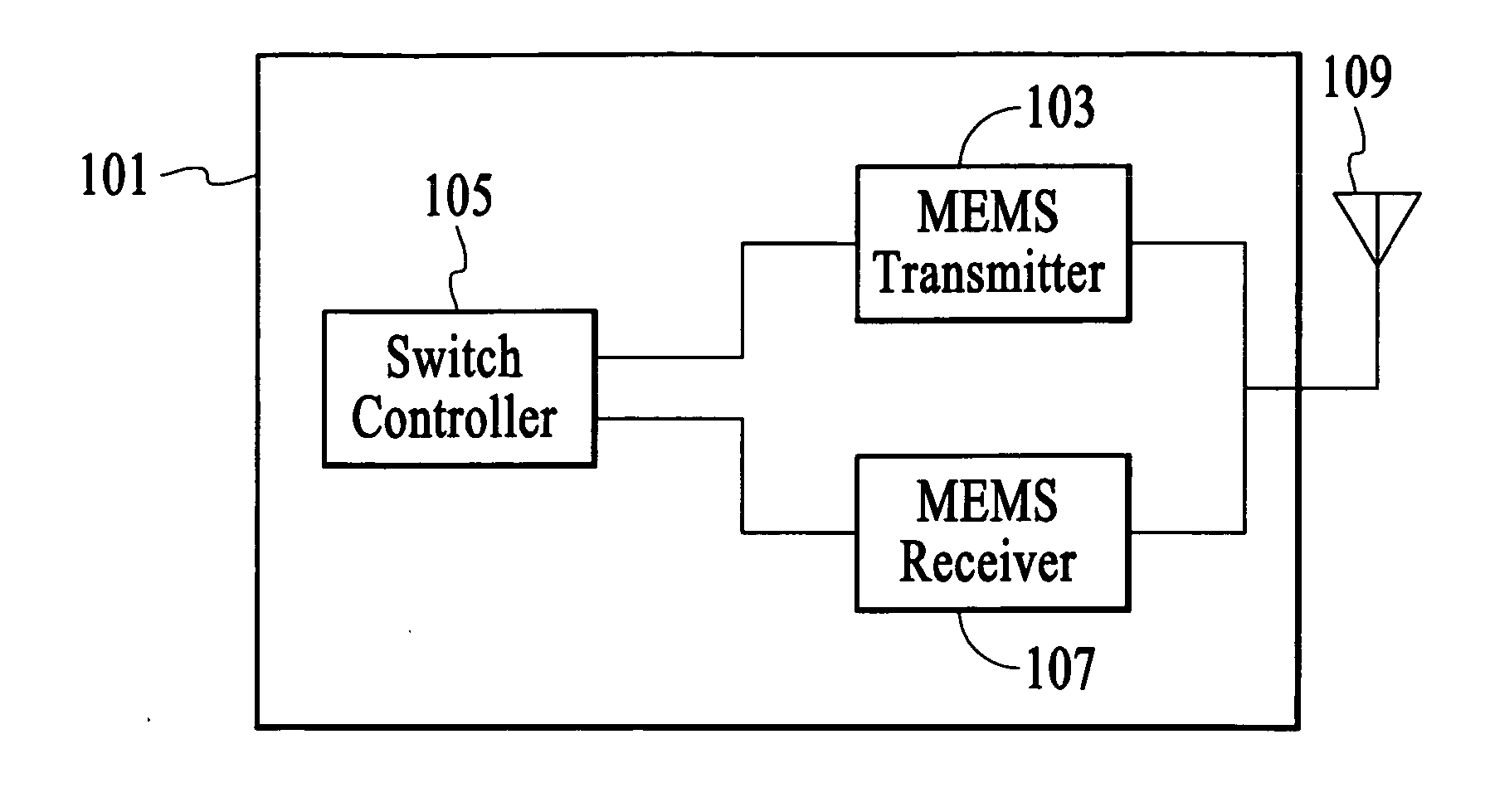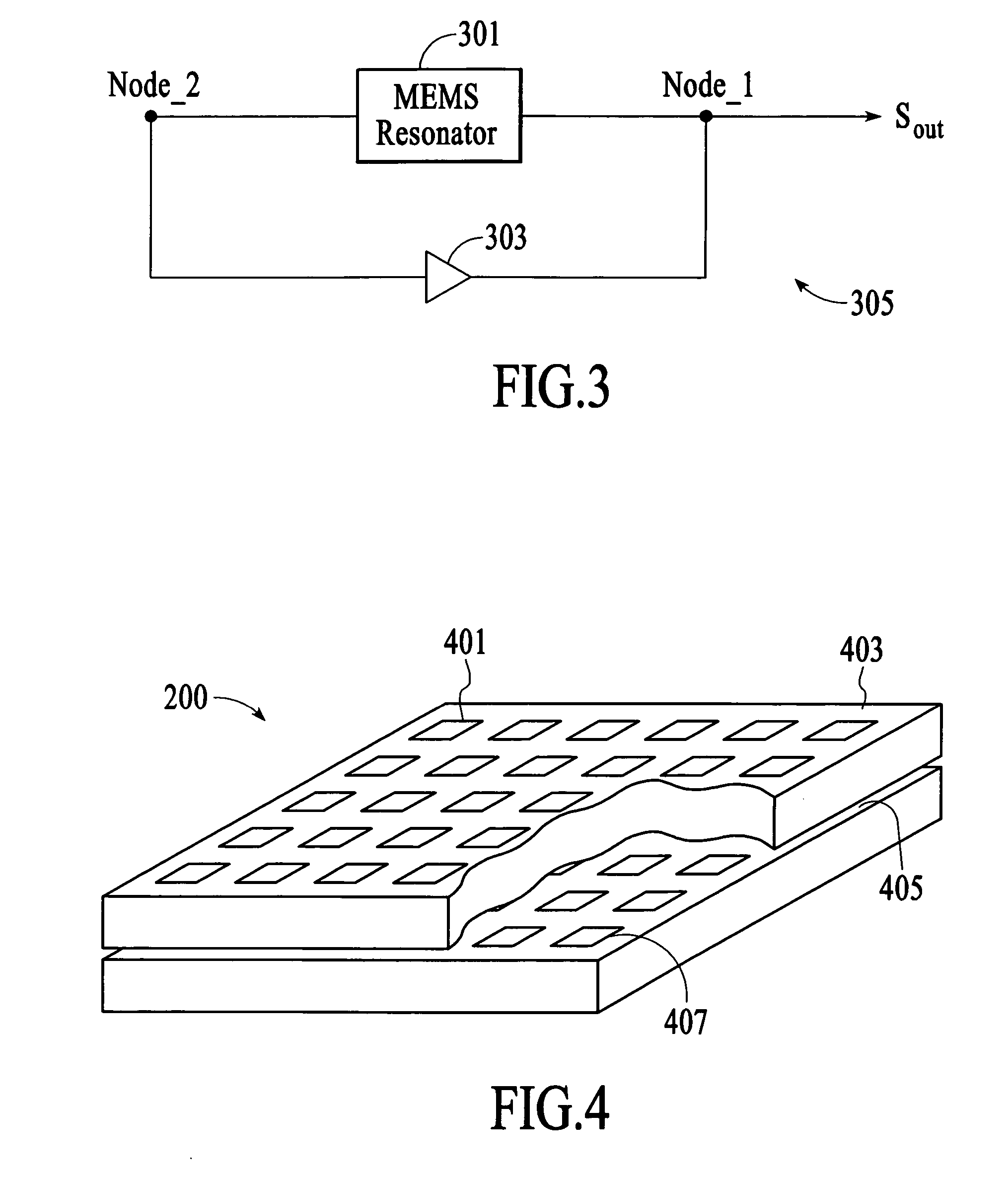Spread-spectrum radio utilizing MEMS components
a technology of mems components and spread-spectrum radios, applied in the direction of transmission, electrical equipment, impedence networks, etc., can solve the problems of limiting factors such as the size and power required by voltage controlled oscillators, the inability to ensure the transmission of classified information, and the difficulty of radio signals to detect and decode. , to achieve the effect of high q factor, compact size and desirable performance characteristics
- Summary
- Abstract
- Description
- Claims
- Application Information
AI Technical Summary
Benefits of technology
Problems solved by technology
Method used
Image
Examples
Embodiment Construction
[0014] A spread-spectrum radio, such as a frequency-hopping spread-spectrum radio or a direct-sequence spread-spectrum radio, includes a transmitter that utilizes microelectromechanical systems (MEMS) based oscillation system to generate a spread-spectrum signal and / or a receiver that utilizes a MEMS-based frequency selection system to receive a spread-spectrum signal. In an embodiment, the MEMS-based oscillation system and the MEMS-based frequency selection system utilize MEMS resonators such as thin film bulk acoustic resonators (FBARs) that are fabricated in high density on a single substrate.
[0015]FIG. 1 depicts a spread-spectrum radio 101 for transmitting and receiving a spread-spectrum signal that has information disposed thereon. In the embodiment of FIG. 1, the spread-spectrum radio utilizes frequency-hopping as is referred to as a frequency-hopping spread-spectrum (FHSS) radio. In an alternative embodiment, the spread-spectrum radio utilizes a direct-sequence spread-spectr...
PUM
 Login to View More
Login to View More Abstract
Description
Claims
Application Information
 Login to View More
Login to View More - R&D
- Intellectual Property
- Life Sciences
- Materials
- Tech Scout
- Unparalleled Data Quality
- Higher Quality Content
- 60% Fewer Hallucinations
Browse by: Latest US Patents, China's latest patents, Technical Efficacy Thesaurus, Application Domain, Technology Topic, Popular Technical Reports.
© 2025 PatSnap. All rights reserved.Legal|Privacy policy|Modern Slavery Act Transparency Statement|Sitemap|About US| Contact US: help@patsnap.com



